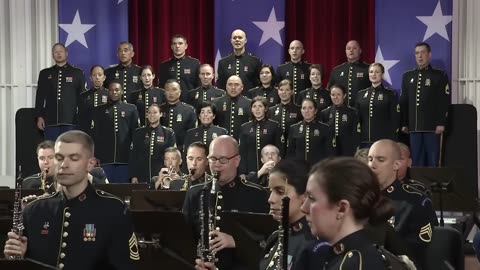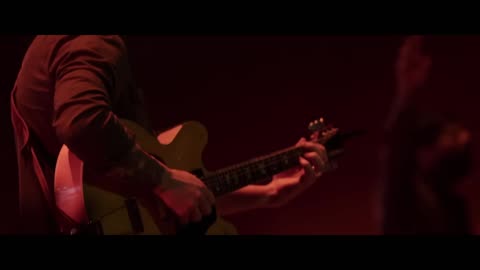
-
The Battle Hymn of the Republic of the United States of America
 NatalieGWintersThe United States Army Field Band performs the famous Civil War-era piece, "The Battle Hymn of the Republic." "The Battle Hymn of the Republic" was written in November 1861, in the earliest, most uncertain days of the American Civil War. Its author, Julia Ward Howe, was a passionate abolitionist and social reformer who believed the Union’s struggle was not only a political conflict but also a moral crusade against slavery. The hymn arose after Howe visited Union Army camps near Washington, D.C., where she heard soldiers singing “John Brown’s Body,” a rousing but somewhat crude marching song honoring the radical abolitionist who had been executed just two years earlier. A minister accompanying Howe suggested she write more refined, inspirational verses to the same melody. That night, unable to sleep, Howe awoke with the words forming in her mind and hurried to write them down. By early 1862, The Atlantic Monthly published the hymn, and it quickly spread through Union ranks and Northern churches. The language of the hymn reflects the urgency and convictions of its time: biblical imagery of judgment and triumph framed the war as a divine reckoning. Lines such as “He hath loosed the fateful lightning of His terrible swift sword” suggested that God Himself was wielding justice through the Union cause. For many Northerners, especially abolitionists, the hymn reinforced the belief that ending slavery was a sacred duty. Civil War–Era Facts Connected to Its Writing: Written just months after the Civil War began (the war started in April 1861 with the attack on Fort Sumter). Inspired directly by Union soldiers’ campfire singing of “John Brown’s Body,” which tied the cause to the memory of the fiery abolitionist. Julia Ward Howe was paid only $5 for the hymn’s first publication in The Atlantic Monthly in February 1862. The song became a rallying cry for Union soldiers, giving moral and spiritual weight to the sacrifices of war. Its popularity reflected a growing view in the North that the war was not just about preserving the Union but about eradicating slavery. Do you want me to also connect it to Lincoln’s era policies and speeches (like the Emancipation Proclamation), since they aligned closely with the hymn’s message of divine justice? You’ve hit the Free plan limit for GPT-5. Responses will use another model until your lim871 views
NatalieGWintersThe United States Army Field Band performs the famous Civil War-era piece, "The Battle Hymn of the Republic." "The Battle Hymn of the Republic" was written in November 1861, in the earliest, most uncertain days of the American Civil War. Its author, Julia Ward Howe, was a passionate abolitionist and social reformer who believed the Union’s struggle was not only a political conflict but also a moral crusade against slavery. The hymn arose after Howe visited Union Army camps near Washington, D.C., where she heard soldiers singing “John Brown’s Body,” a rousing but somewhat crude marching song honoring the radical abolitionist who had been executed just two years earlier. A minister accompanying Howe suggested she write more refined, inspirational verses to the same melody. That night, unable to sleep, Howe awoke with the words forming in her mind and hurried to write them down. By early 1862, The Atlantic Monthly published the hymn, and it quickly spread through Union ranks and Northern churches. The language of the hymn reflects the urgency and convictions of its time: biblical imagery of judgment and triumph framed the war as a divine reckoning. Lines such as “He hath loosed the fateful lightning of His terrible swift sword” suggested that God Himself was wielding justice through the Union cause. For many Northerners, especially abolitionists, the hymn reinforced the belief that ending slavery was a sacred duty. Civil War–Era Facts Connected to Its Writing: Written just months after the Civil War began (the war started in April 1861 with the attack on Fort Sumter). Inspired directly by Union soldiers’ campfire singing of “John Brown’s Body,” which tied the cause to the memory of the fiery abolitionist. Julia Ward Howe was paid only $5 for the hymn’s first publication in The Atlantic Monthly in February 1862. The song became a rallying cry for Union soldiers, giving moral and spiritual weight to the sacrifices of war. Its popularity reflected a growing view in the North that the war was not just about preserving the Union but about eradicating slavery. Do you want me to also connect it to Lincoln’s era policies and speeches (like the Emancipation Proclamation), since they aligned closely with the hymn’s message of divine justice? You’ve hit the Free plan limit for GPT-5. Responses will use another model until your lim871 views -
What A Beautiful Name - Hillsong Worship
 NatalieGWinters“What a Beautiful Name” by Hillsong Worship is a modern worship anthem that exalts the power, beauty, and majesty of Jesus’ name. The song begins with a tender reflection on God’s great love and His plan of redemption through Christ, then builds into a soaring declaration of His unmatched authority over sin, death, and the grave. With its poetic lyrics and stirring melody, it captures both intimacy and grandeur—inviting listeners to marvel at the beauty, wonder, and power found in the name of Jesus. A staple in contemporary Christian worship worldwide, the song resonates deeply because it blends heartfelt devotion with timeless truth, offering a profound reminder of the hope and victory believers share through Christ.230 views 1 comment
NatalieGWinters“What a Beautiful Name” by Hillsong Worship is a modern worship anthem that exalts the power, beauty, and majesty of Jesus’ name. The song begins with a tender reflection on God’s great love and His plan of redemption through Christ, then builds into a soaring declaration of His unmatched authority over sin, death, and the grave. With its poetic lyrics and stirring melody, it captures both intimacy and grandeur—inviting listeners to marvel at the beauty, wonder, and power found in the name of Jesus. A staple in contemporary Christian worship worldwide, the song resonates deeply because it blends heartfelt devotion with timeless truth, offering a profound reminder of the hope and victory believers share through Christ.230 views 1 comment

